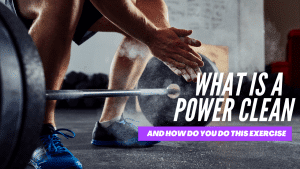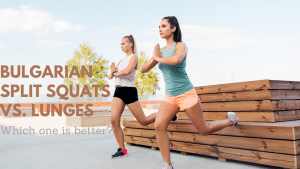How to do squats for beginners
and the benefits of this exercise
There are only a few basic movements that the body needs to do to survive every single day—push, pull, bend, and squat. It may seem that people do more than just those movements daily but pushing, pulling, bending, and squatting is essentially the foundation of every move.
When it comes to exercising, it is pretty much the same. And if you are a fitness newbie, there is no need to do complex exercises that require fancy equipment straight away. You can never go wrong with the basics so if you are still undecided about what to do, just start with them.
But among the basics, there is one relatively simple yet highly effective exercise worth every drop of sweat—the squat.
What is a squat?
The squat, also known as air squat, is a dynamic strength training exercise that uses your body weight as resistance. In a controlled up-and-down movement via hinging at the hips, the muscles in your lower body, specifically the glutes, quads, hamstrings, adductor, hip flexors, and calves, work together to maintain your balance throughout the exercise.
Aside from the lower body muscles, you also recruit your core muscles—the rectus abdominis, transverse abdominis, obliques, and erector spinae—to maintain an upright posture and stabilize your torso during the movement.
We have said it once and we will say it again: strengthening your core and legs will provide a massive improvement in day-to-day tasks such as going up and down the stairs, carrying groceries, picking up something from the floor, and even something as simple as walking. This is why squats, regardless of the variation, should be included in your workout routine.
How to do a basic squat
But before doing any squat variation, let us first get to know the squat in its purest form.
- Begin in a standing position with your feet more than hip-width apart for a solid base.
- Retract your shoulders to bring your chest out then put your arms forward.
- Lower your hips in a sitting position while engaging your core as you do this.
- Once your thighs are parallel to the ground, you should start to feel the burn in your glutes and hamstrings.
- Hold that position for two seconds before going back to the starting position.
Tips for a better squat
- If you can go deep in your squat, then well and good. But if you feel pain in your hips or knees, stop immediately and only go as low as you comfortably can.
- Keep your neck in a neutral position by looking straight ahead. This is to avoid leaning forward and bringing your chest down.
- Just like your neck, your back should also be in a neutral position all the time. To make sure of this, keep your shoulders retracted. The spine assists the core in stabilizing your torso during a squat so it is vital to keep it straight.
Benefits of squats
Stronger lower body
The glutes, quadriceps, hamstrings, adductors, hip flexors, and calves are responsible for almost every move so when these muscles are in good condition, movement becomes easier, more comfortable, and less painful.
Reduced risk of injury
Aside from the lower body muscles, squats also help strengthen the tendons, ligaments, and bones thereby ensuring not only a more fluid movement but also reducing the risk of injury,
Sculpted legs
Not only does the squat strengthen your legs, but it also sculpts them. Moreover, squats are safer than other exercises like lunges because there is more stability since both legs are used. In short, the squat is safe, can strengthen, and can sculpt. Who would have thought such simple exercise is capable of a triple whammy?
Booty-ful behind
If you include squats in your workout routine, you are already one step closer to achieving this. As long as you do them consistently and with proper form and movement—that is squeezing your glutes to activate them as you come up—then you will achieve that bubble butt in no time. Who doesn’t want one anyway? Girls want to have it, boys want to look at it.
Squat mistakes you need to avoid
Knees caving in
Avoid letting your knees cave in during the lowering phase of the exercise. This is because the glutes are more engaged when the knees are pointing outward, so the knees caving in basically defeats the purpose of the squat. One good way to ensure this doesn’t happen is to use a resistance band around your knees to keep them in place.
Bending forward
Some people tend to lean forward as they lower into the squat but this should not be the case because putting yourself in this position compromises your balance. Remember to bend at the hips and lower them like you would when sitting down while keeping your torso upright and your knees not going over your toes.
Squatting too fast
Lowering your hips then coming back up too quickly compromises your form and makes you more prone to injuries. Keep in mind that to get optimal results, you must maintain proper form throughout the movement.
Using the toes
Never come up from a squat using the ball of your feet. Keep in mind that when going back up, the power should come from the midfoot so the feet should remain firmly planted on the ground throughout the exercise.
Squat variations to try
Overhead squat
- Begin in a standing position with your feet more than hip-width apart.
- Hold the medicine ball above your head throughout the exercise.
- Bend your knees and lower your hips as you would in a regular squat until your thighs are parallel to the ground.
- Hold that position for two seconds with your knees over your toes then return to the starting position and your glutes a squeeze at the top of the movement.
Jump squat
- Begin in a standing position with your feet more than hip-width apart
- Lower your hips until your thighs are slightly higher than your knees.
- Thrust yourself up until your feet are off the ground.
- Control your impact upon landing with soft, bent knees to land gently.
Wall sit
- Begin by standing about two feet in front of a wall and lean against it.
- Slide your back down and walk your feet out until your knees are at a 90-degree angle.
- Stay in that position while bracing your abs for at least 30 seconds.
- Go back to the starting position and repeat at different angles to work the lower body in different ways.
- To make it more challenging, try holding weights or squeezing a ball between the knees.
Single-leg squat
- Begin by placing an exercise ball against a wall and leaning your lower back against it.
- Slightly lift your right foot off the ground while moving your left foot closer to the middle for balance.
- Activate the muscles of your left leg then lower your hips while keeping the right leg lifted. If you find this too difficult, you may rest your hands against the wall for support.
- Go back to the starting position and repeat according to your desired number of reps before doing the exercise with your other leg.
Curtsy squat
- Begin in a standing position with your feet shoulder-width apart.
- Put your hands on your hips or down at your sides, whichever is more comfortable for you.
- Engage your core as you step back and across with your right foot until your left thigh is parallel to the floor.
- Hold that position for a while before pushing back up using the heel of your left foot to return to the starting position.
- Step back with your left foot then repeat according to your desired number of reps.
Split squat
- Begin by putting one leg in front and the other leg behind to get into a staggered stance.
- Keep your arms down at your sides but you may hold a pair of weights for an extra challenge.
- Bring your chest out and brace your core as you bend your knees until your knee is almost in contact with the ground and your thigh is parallel to the floor.
- Hold that position for a few seconds before going back to the starting position.
- Repeat according to your desired number of reps before switching the positions of your legs.
Goblet squat
- Begin by standing with your feet hip-width apart and toes angling out.
- Hold one end of the dumbbell with cupped hands while the other end hangs toward the floor.
- Bring the dumbbell in front of you with bent elbows and make sure that it is touching your chest.
- Lower your hips and bend your knees while keeping the dumbbell stationary.
- Briefly pause in that position before coming back up and squeezing your glutes at the top of the movement.
- Repeat according to your desired number of reps.



